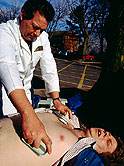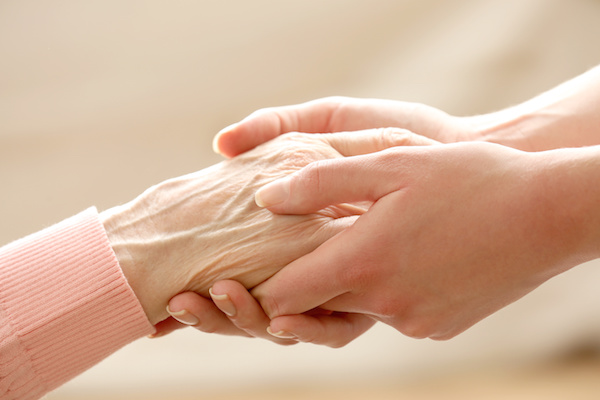
SATURDAY, Nov. 15, 2014 (HealthDay News) — Cardiac arrest is most often fatal, but research is conflicting on whether women have better survival odds than men.
In two studies scheduled to be presented Saturday at the American Heart Association’s annual meeting in Chicago, researchers reached differing conclusions.
One French study, of more than 400,000 cardiac arrest victims, found that women were 11 percent more likely to survive than men even though the women had more strikes against them: They were typically older than their male counterparts, for example, and were less likely to receive CPR from a bystander.
But the other study — of roughly 22,000 cardiac arrests in the Netherlands — found that women were less likely to be successfully revived by paramedics.
The reasons for the conflicting findings are not completely clear, according to Dr. Michael Sayre, a professor of emergency medicine at the University of Washington and a spokesman for the American Heart Association (AHA).
But it’s likely that, overall, women have slightly higher survival odds, said Sayre, who was not involved in the research.
That is partly because the larger study from France is the stronger one, according to Sayre. “It’s probably closer to the truth,” he said.
But there are also hints from animal research that estrogen may somewhat shield the brain from damage during cardiac arrest, Sayre explained. As for humans, he added, studies have found that women of child-bearing age, in particular, have a higher survival rate after cardiac arrest than men the same age.
Cardiac arrest occurs when the heart’s normal rhythm abruptly stops, and the organ can no longer pump blood and oxygen to the body. It can be triggered by a heart attack, but the two conditions are different.
Without emergency treatment, cardiac arrest is fatal within minutes. Bystanders can perform chest compressions to keep blood circulating through the body until emergency help arrives. At that point, paramedics may be able to use a defibrillator to “shock” the heart back into a normal rhythm.
But even with quick action, cardiac arrest remains highly lethal. Among Americans who suffered cardiac arrest outside of a hospital in 2013, about 40 percent received CPR from a bystander, according to the AHA. But only about 10 percent survived.
In the French study, researchers looked at a dozen international studies of more than 400,000 cardiac arrest patients. In general, the investigators found, the women were older than the men, and were less likely to receive CPR.
“That’s probably related to the fact that women are more likely to be living at home, alone, when they’re elderly,” Sayre said.
In the study, the women were also less likely to have a “shockable rhythm” by the time help arrived, which means a defibrillator could not be used.
Yet they were still 11 percent more likely than men to survive — a small but still “interesting” difference, Sayre said.
The Dutch study found a different pattern. The women were, again, less likely to have a shockable rhythm when paramedics arrived — and that translated into a lower survival rate.
Lead researcher Marieke Blom, of the Heart Failure Research Center in Amsterdam, said it’s not clear why women are less likely to have a shockable rhythm, but there could be biological factors at work.
She said women were less likely to have a cardiac arrest brought on by ventricular fibrillation — an erratic heart rhythm that rapidly triggers an arrest. It’s possible, Blom added, that compared with men, women more often have a “gradual” onset of cardiac arrest — triggered by a heart attack, for example.
Blom noted that women’s heart attack symptoms are often “indistinct,” including fatigue, dizziness and jaw pain. “Women themselves may not recognize the urgency of their complaints, and retire to rest because they are not feeling well,” she said.
According to Sayre, further research into the reasons for gender differences in cardiac arrest could lead to new ways to improve all patients’ survival odds.
Right now, if a patient can be resuscitated, one treatment option is angioplasty — where a catheter is threaded into a heart artery to push aside blockages. A third study presented at the meeting found that patients who received immediate angioplasty were more likely to survive: 42 percent were alive a month later, versus 26 percent of patients who did not receive angioplasty.
But Sayre said angioplasty should not be routine. “If a patient clearly had a heart attack (before the cardiac arrest), then most people would agree angioplasty should be done,” he said.
However, barring a heart attack, Sayre said, the risks of the procedure might outweigh the possible benefits.
The data and conclusions of research presented at medical meetings should be viewed as preliminary until published in a peer-reviewed journal.
More information
The American Heart Association has more on cardiac arrest.
Copyright © 2025 HealthDay. All rights reserved.

